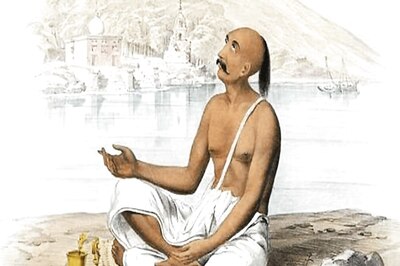
views
window._taboola = window._taboola || [];_taboola.push({mode: 'thumbnails-a', container: 'taboola-below-article-thumbnails', placement: 'Below Article Thumbnails', target_type: 'mix' });Latest News
The move of the state to opt for a contributory pension scheme for new recruits to the government service from next fiscal, following the pattern of the Union Government, is a challenge taken up by the State Government for the well-being of future generations, Chief Minister Oommen Chandy has said.
‘’It is a creative step to prevent financial bankruptcy that could occur in the future,” Chandy said in an article released on the eve of Independence Day.
The state had implemented the CPF scheme for personnel of the all-India services in 2010. In the 2010-11 Budget, the then Finance Minister Thomas Isaac had announced the setting up of a pension fund for universities. The new pension scheme should be seen as a continuation of pension reforms, Chandy said.
Kerala has a unique situation wherein the number of government servants (5.34 lakhs) is less than the number of pensioners (5.50 lakhs). Nearly 20,000 persons retire from government service every year. In the last eleven years, the pension liability of the State Government had increased from Rs 1,838 crore to a whopping Rs 8,178 crore.
The expenditure of a major portion of the State’s revenue on pension, salary and interest payments has led to financial strain, forcing the state to borrow capital for investments. The overall debt of Kerala in 2012-13 stood at Rs 88,746 crore.
Employment generation is possible only when fresh investments are made, he noted. Contributory pension is seen as a major step to bail out Kerala from this vicious circle and promote growth-oriented investments through savings, he hoped. ‘’Taking into account the lowest age of retirement prevailing in India and also the high life expectancy of the people here, which is on a par with European countries, the duration of service has become less compared to that of the pension.
Based on the present one-rank, one-pension scheme a pensioner gets much more than what one received at the time of retirement,” the Chief Minister noted.
Presenting more reasons in support of CPF Scheme, Chandy said that most states in India and also public sector undertakings have implemented the scheme and only Kerala, West Bengal and Tripura were yet to adopt it.
Allowances are decided beforehand in Kerala with no indications as to how resources can be generated for payment. Pension can be provided only if there is income, he said. A government employee needs to share a fixed percentage of his or her basic pay and the dearness allowance combined in the CPF scheme.
The contribution will be reciprocated by an equal share by the government, he said.



















Comments
0 comment